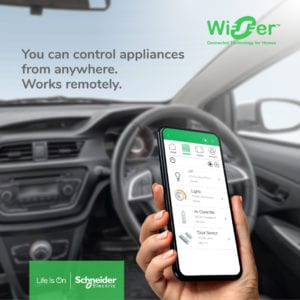We have never spent more time in our own homes than we have in the past twenty four months. It is no surprise then that consumer spending on home improvements is one sector that continues to experience growth, along with digital entertainment and consumer electronics.
At the same time, 2020 has been a wakeup call for many to protect our planet. Tackling the climate emergency continues to gain mindshare, as more and more voices join the call to accelerate climate action. Governments across the UK and Europe have pledged to drive a green recovery as we emerge from this pandemic, and many consumers now say they would like their homes to be net zero within their lifetimes.
But when it comes to acting on these aspirations, could our love of DIY actually be harnessed to reduce our individual carbon emissions and create net zero homes in the buildings we currently occupy?
I believe the answer is a resounding yes, and it is digital technologies that hold the key.

How did we get here?
Households are set to become the largest CO2 emitters – even before the switch to electric vehicles or decarbonisation of heat. But in addition to the explosion in remote working and streaming services, and our increasingly digital lives in general, there are two fundamental reasons for the increase in consumer energy consumption in the developed world. Access to power and little to no ability to measure or understand our energy consumption or waste.
It’s only relatively recently that we have been so wasteful in our attitudes to energy. Mass electrification transformed European and North American dwellings in the early 20th century. Not so long ago, our grandparents hoarded candles and used them sparingly for light to read a book or write a letter. They’d put on layers of clothing rather than adding a log to the fire to get warm – as resources were limited and costly.
Today, energy is available at the flick of a switch. It’s plentiful and convenient – and powers an ever-increasing array of appliances and smart technology in the home – a flat screen TV, a HVAC system, fridges, ovens and freezers – with video and music streaming as well as working from home eating into our energy use. Yet, with all these changes, energy waste or loss has remained largely invisible. For most of us, we receive a regular bill which tells us how much energy we’ve consumed, but gives no indication of how or where it has been used.
How do we take the ‘power’ into our own hands?
This is where the DIY Net Zero home concept comes in handy. There are two parts to the consumer empowerment story when it comes to tackling climate change. One is putting an element of energy generation back into the hands of the homeowner through the power of digital, electrification and modern AI-based analytics linking rooftop solar panels, ground source heat pumps and battery storage – to decarbonise their energy use where a ‘green’ tariff isn’t readily available (two-thirds of the global buildings sector’s energy consumption is supplied by fossil fuels).
The other side of the net zero coin is to make it clearer to consumers where that energy is being used at an appliance-by-appliance level. This is where digital retrofits of homes are becoming increasingly important – making energy consumption and energy waste visible through the power of technology, through an equivalent of a “Fitbit” for your home.
But this is not about consuming less. It is about consuming better, ‘greener’ energy.
We know that asking people to change their lifestyles – especially when they’ve come to rely upon digital technologies for work, entertainment and schooling, is too much to ask. The way to solve the energy dilemma – providing more people with access to energy and a better quality of life while reducing energy consumption to meet climate change targets – is to decentralise energy production and consumption, so that homeowners could generate plentiful green energy and use it in their homes or store it for later use.
Electricity is a more efficient source of energy – and as we progressively electrify heating and cooking, and power our homes and electric vehicles with electricity derived from solar power or wind, we’ll find carbon emissions dissipating from our homes almost entirely.
With the most recent smart home technology, consumers can decarbonise their homes at will. They can strive to make a real impact, ‘rebel’ against inefficient home construction or lack of access to green tariffs from their energy provider, by taking their homes’ sustainability matters into their own hands.
Allowing consumers to be the enablers of their home’s net zero future can create a lot of goodwill and gamify the process – as residents would be able to measure their progress towards net zero goals against that of their friends or neighbours.
What sounds like science-fiction no longer has to be a complex endeavour – the power of Artificial Intelligence will be key to ensure homeowners don’t have to remember to switch off the lights or close the window before our room heating comes on. Technology will do that for us.
The sustainability resolution that could last a lifetime
Like any (self)improvement project we may be embarking on early in the year, quantifying and tracking our progress will be critical to keep us on track – and this is exactly what smart home technology should help us do. For the first time, with the help of smart home solutions, sustainability can be a DIY project that homeowners can fully take into their own hands.
There is a belief that everyone should attempt to run a marathon at least once in their lives. For me, the journey of sustainability is a marathon without the finish line. It requires a lifelong commitment. But once you’re on this journey, it will be eternally rewarding.



